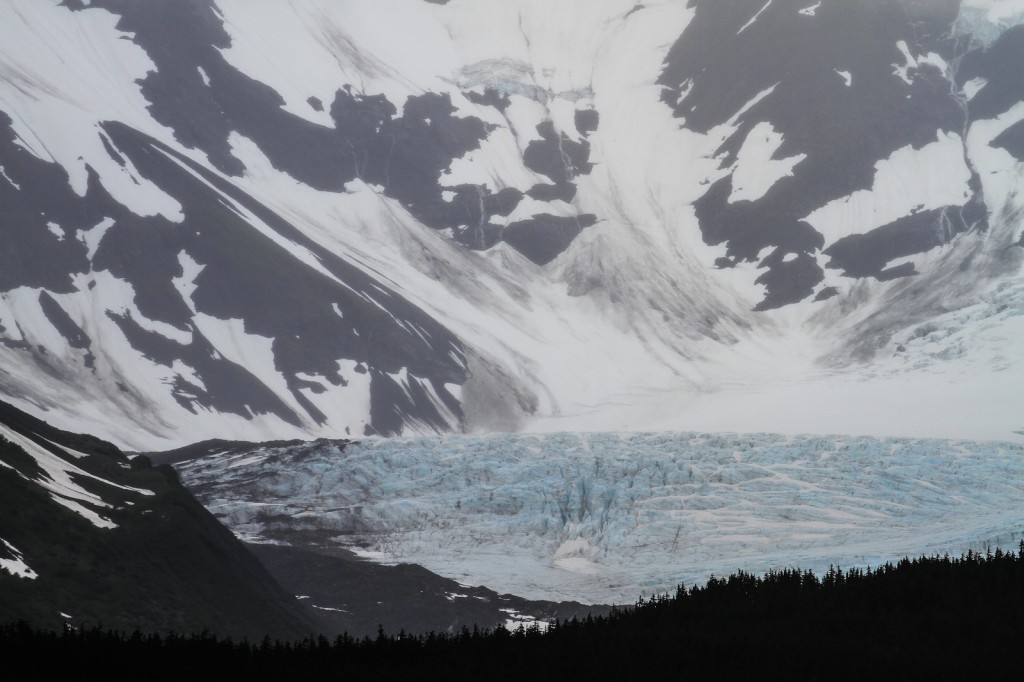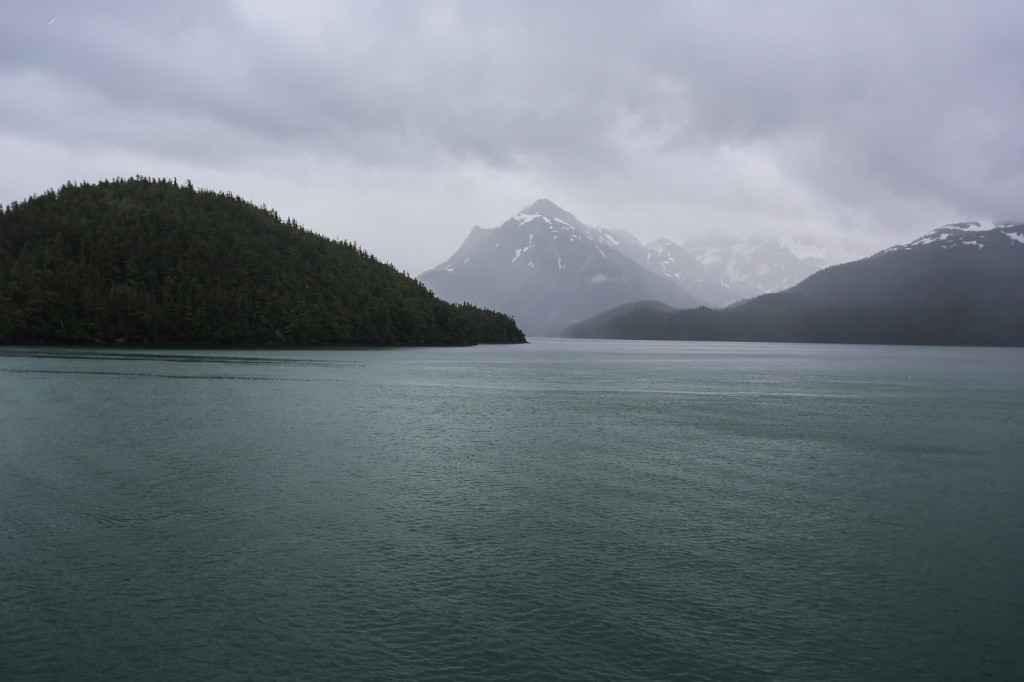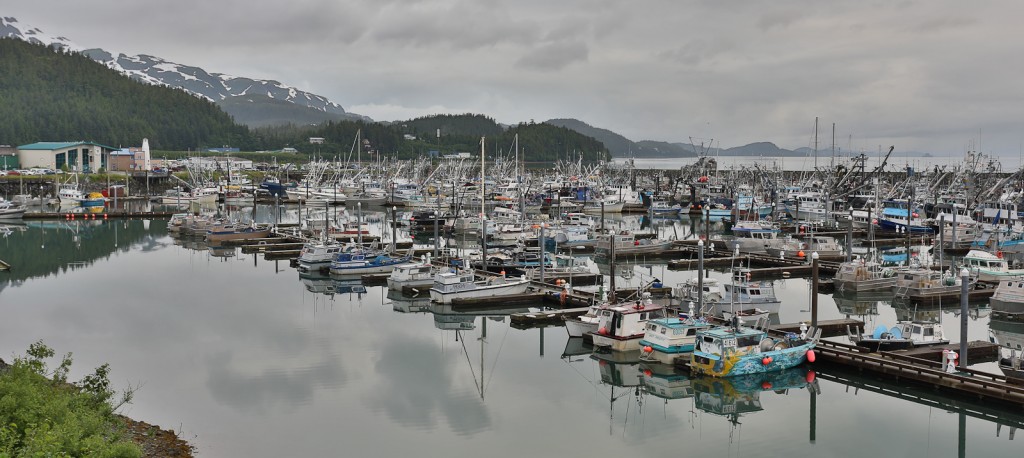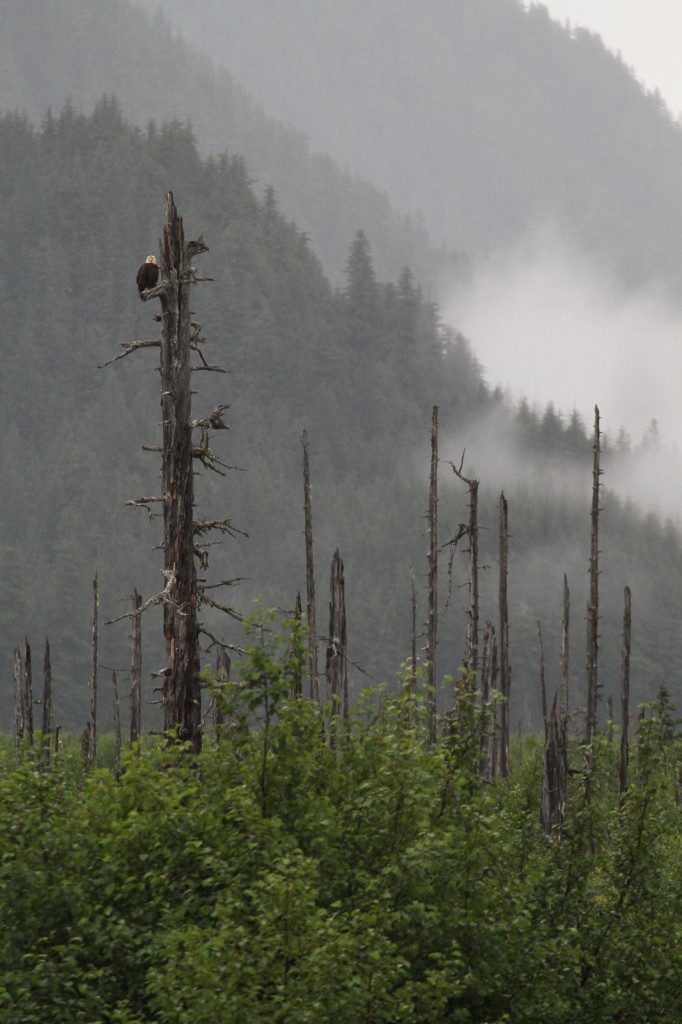Our destination today is the small (population 2,500) fishing village of Cordova located at the head of Orca Inlet on the east side of Prince William Sound. It is accessible only by air or water as there are no roads which connect it to the rest of Alaska. We will travel there by high speed ferry leaving from the deep port city of Whittier which we reach through the Whittier Tunnel, the longest (2.5 miles) combined car and rail tunnel in North America. The one way tunnel operates according to a schedule with four phases (east bound auto, west bound auto, east bound train, and west bound train). During the morning we visited the Portage Glacier once visible from the nearby Begich/Boggs Visitor Center where we learned about glaciers and the native wildlife of our 49th state.
The weather at this time of year is often overcast and rainy which made our 3 hour ferry transit less of the photo opportunity I had hoped for. I did, however, spot several sea otters happily floating on their backs.
Off the beaten path Cordova is dominated by the marina and the town is authentically Alaskan, absent the scores of tourist gift shops which dominate cruise boat destinations. People here work the sea. For two nights we will stay at the Lighthouse Inn (can you find it in the photo).
Jeanine spotted our first Bald Eagle as we made a late afternoon excursion into the Copper River Delta, an incredible wetland formed by six glacial river systems stretching across a 60-mile arc. The Delta is characterized by a myriad of shallow ponds, intertidal sloughs, braided glacial streams, sedge marshes, willow thickets, and stands of spruce and cottonwood. While in Alaska we hiked almost every day and this afternoon we kicked things off with a relatively easy climb of the Haystack Trail.




